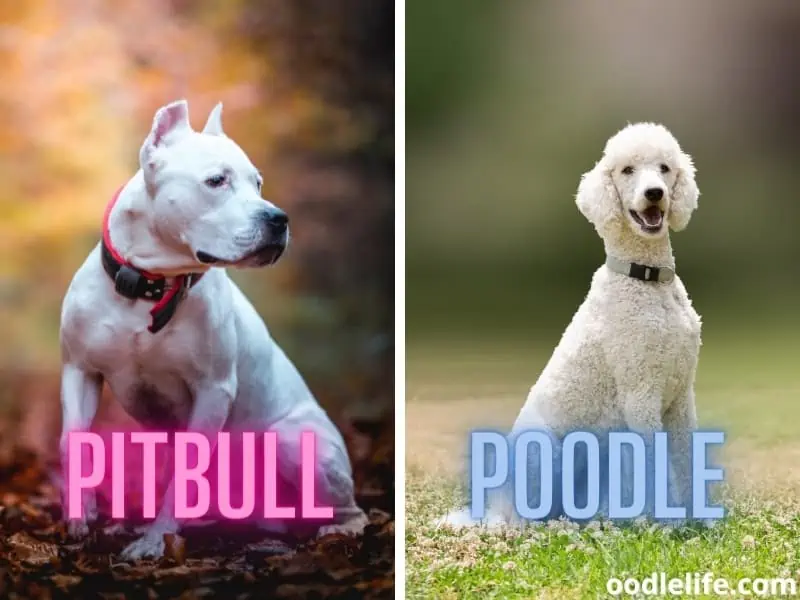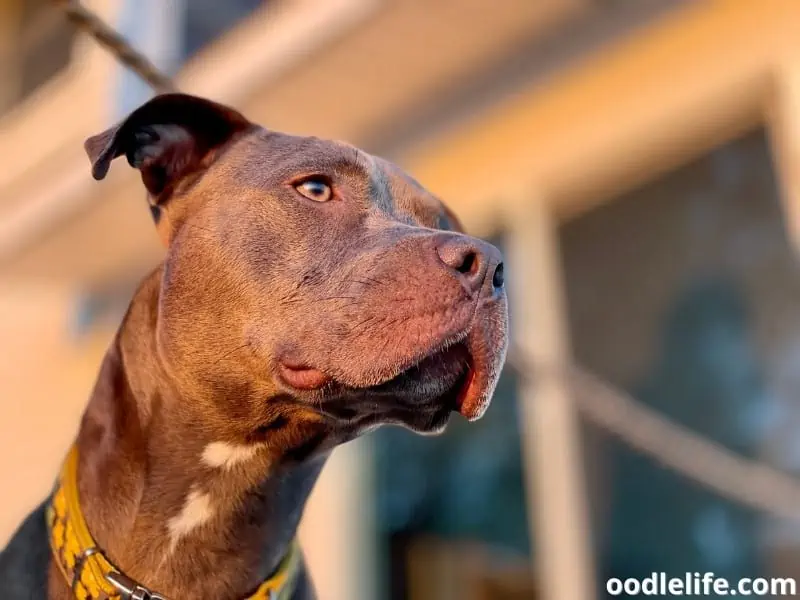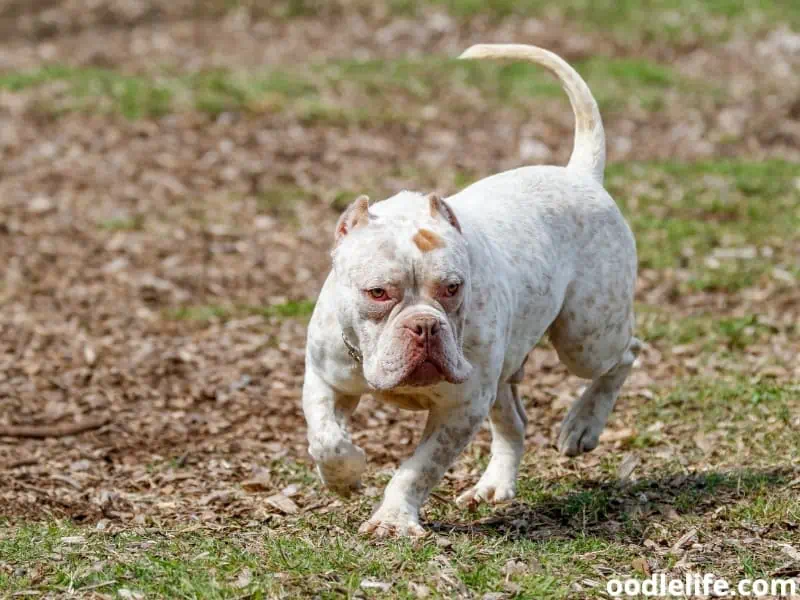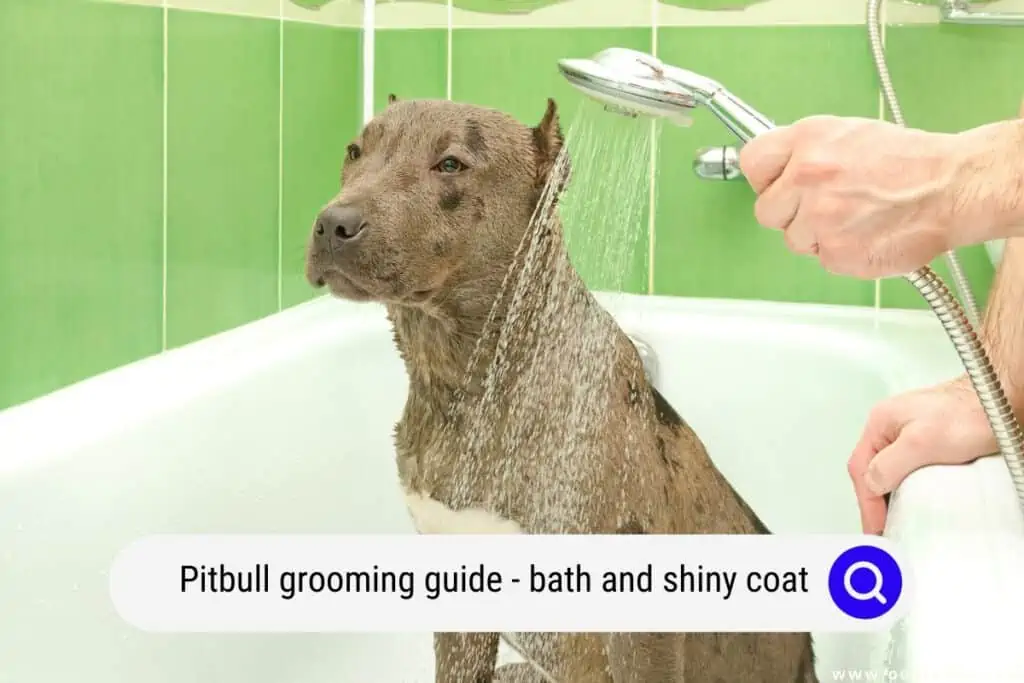Do Pitbulls Shed? (2025)
If you’re thinking about making a Pitbull your next pet, you’re in luck—despite their bad rep, these dogs are a sweet, loving breed when you treat them right.
But there are many aspects of owning a dog to consider, and the amount of fur a breed sheds usually makes the top of the list for people who don’t want to spend every day cleaning their home.

So, do Pitbulls shed?
Yes, Pitbulls shed throughout the year. The good news is that they don’t shed as much as dogs with double-layer coats. But they shed significantly more than hypoallergenic breeds.
I’ve cleaned up my fair share of Pitbull fur. So, I’ll give you background on why Pitbulls shed, how you can reduce shedding, and some strategies for making cleaning easier around your house.
Pitbull Fur vs. Dog Hair
Dog owners commonly interchange the words “fur” and “hair” when talking about their pet’s coat. But the reality is that these are two different things.
Pitbulls have fur, meaning they have hair with a shorter growth cycle. Fur is often shorter and grows thicker than dog hair.
The downside to dogs with fur is that they tend to shed more frequently. Plus, unlike hair, which often traps other loose hair, fur will slide off your Pitbull and onto your floor.

Qualities of a Pitbull’s Fur
Pitbulls have a short, single-layer coat.
The good news is that dogs with single-layer coats shed less than those with long coats. That’s because single-layer coats tend to have denser hair, keeping your Pitbull warm in the winter.
For this reason, they don’t need to shed extra in the spring and fall to compensate for the change in seasons.
Of course, Pitbulls are nowhere near breeds like the Poodle regarding their infrequent shedding. So, although you won’t have to deal with bouts of excessive fur on your floor in the spring and fall, your beloved Pitbull will leave a steady amount of fur around your home year-round.

Differences in Pitbull Fur
There are four commonly recognized types of Pitbulls, and some of them have unique fur types. That said, all four breeds have a short, single-layer coat that’s shiny and soft to the touch.
The differences in Pitbull fur types are as follows.
American Bully: Waviest hair and notably smoother than the other Pitbull varieties.

American Staffordshire Terrier: Slightly stiff hair that sits close to the skin.

American Pitbull Terrier: Essentially the same hair make-up as the American Staffordshire Terrier.

Staffordshire Bull Terrier: A more flexible, less stiff coat than the other Pitbull breeds.

How Often Do Pitbulls Shed?
Since Pitbulls have a single-layer coat, they shed year-round, independent of the season. In contrast, dogs with double coats tend to shed more in the spring and fall, in addition to shedding year-round.
So, Pitbulls fall in the middle to the low end of the spectrum as shedding dogs. The American Kennel Club even rates them a two on a scale of five, with one being “No shedding” and five being “Hair everywhere.”
Needless to say, you can expect to see some fur on your hands or floor almost any time you pet your Pitbull. But the amount is far less than many dog breeds, and you’ll never have to worry about seasonal shedding.

Causes of Excess Pitbull Shedding & How To Fix It?
Shedding in Pitbulls is as natural of a process as strands of human hair falling out. It’s essential to your dog’s health, as it keeps its skin and fur healthy by eliminating old and damaged fur pieces.
That said, some situations can cause your Pitbull to shed more frequently than normal. Below are some of the most common reasons.
Lack of Water
If your Pitbull doesn’t have access to enough water, it can become dehydrated and start shedding excessively.
When dehydration happens, your Pitbull’s body will try to retain water for the most vital parts of its functions, including the brain and heart. Their hair then begins to die at the cuticle, breaking away and landing on your floor.
Dehydration can happen fast, especially in the heat. Therefore, if you take your dog on a hike, make sure to carry water and offer it to it periodically.
You should also ensure your Pitbull has constant access to water at home and a cool, shady place to get out of the sun when outside.

Stress
One of the symptoms of a stressed Pitbull is excess shedding.
If you adopted your Pitbull, there’s a high probability that it had an abusive past compared to many other dog breeds. According to PETA, Pitbulls have the highest rate of owner abandonment.
So, your Pitbull may shed from the stress that you won’t meet their basic needs or fear of abuse.
Alternatively, if you’ve raised your Pitbull as a puppy or know your dog doesn’t have a history of neglect and abuse, it could be shedding from standard canine separation anxiety.
Researchers found that separation anxiety is a condition that occurs in one of every four to six dogs. You can help your dog overcome its stress from separation anxiety (and relieve your floors of excessive fur) by enlisting the support of a dog trainer or therapist.

Dietary Issues
A lack of nutrition is a common cause of excessive shedding in Pitbulls. You might think you’re filling your dog’s bowl with love with the tasty-looking kibble you bought them. But the reality is that many dog food companies market their food to entice humans while using filler ingredients.
So, it’s worth it to splurge on more expensive, higher-quality food. Not only will that save you from extra vacuuming, but it will also increase the chances of your Pitbull living a longer life and you having fewer vet bills in the future.
Other dietary reasons that your Pitbull might be shedding include:
- Allergies to an ingredient
- Continous changes to food brands
That’s right—although you might be eager to change your Pitbull’s food to a higher-quality product after reading this, the reality is that switching from its old to new food too quickly can cause stress on its body and instigate more shedding.

Skin Problems
Healthy skin equates healthy Pitbull fur. So, if your Pitbull has a skin issue, they might be shedding locally in that area because of it.
Some of the most common skin problems Pitbulls have include:
- Allergies
- Sunburn
- Fleas
- Mites
- Fungal infections
Often, you can pinpoint skin issues in a localized area. However, if you don’t catch it soon enough, certain conditions, such as external parasites and fungal infections, can make their way across your Pitbull’s body.
Your Pitbull’s treatment will depend on the type of skin issue it has. So, I encourage you to take it to the vet so it can receive the proper medication. Before long, your dog will feel better, and your floors should see less hair.

Other Strategies for Controlling Pitbull Shedding
Now that you know the answer to “Do Pitbulls shed?” is yes, I’ll give you tips in this section for managing routine Pitbull shedding.
Brush Your Pet
Keeping your Pitbull on a brushing schedule is one of the most effective ways to reduce the amount of fur that makes its way onto your furniture.
The good news is that, unlike some breeds, you don’t need to brush your Pitbull daily. Instead, brushing it two to three times per week is sufficient to keep its shedding in check.
You don’t need to get fancy with buying an expensive brush for your Pitbull. Since Pitbulls have such short hair, a regular pin brush suffices.
When possible, brushing your Pitbull outside is best. All those short hairs can float around, causing a messier clean-up if you brush it inside your home.
Bathe Them
There’s nothing like the occasional bath to give your Pitbull a clean appearance and help reduce the amount of shedding in the days to come.
Bathing helps remove hair that’s on the brink of falling off on its own but would otherwise be difficult to capture with a brush.
When bathing your Pitbull for the first time, apply a small amount of shampoo to a single spot on its skin. If it doesn’t have an allergic reaction within 24 hours, you can assume it’s safe to give it a full bath with it.
While bathing is effective at managing your Pitbull’s shedding, bathing your dog too frequently can cause other problems. That’s because shampoo strips natural oils from your Pitbull’s skin, which it needs for a healthy coat.

Coat-Healthy Supplements
While high-quality dog food should contain the proper balance of vitamins and minerals to maintain your Pitbull’s coat, you can also give it supplements to help control its shedding.
Two of the best supplements for supporting fur health include:
- Fish oil
- Omega fatty acids
You can also find supplements boasting about their skin and fur-healthy qualities. I recommend starting with fish oil, though, which you can give to your dog in a liquid or chewable form.
Conclusion: Keeping Your Pitbull’s Fur in Tip-top Shape
So, do Pitbulls shed?
Yes, despite their short hair and slick coat, Pitbulls shed a decent amount.
In addition to following the advice I shared here about managing your Pitbull’s shedding, you can also use tools to make it easier to keep your house relatively fur-free.
For example, robot vacuums will work day and night, while an air purifier can help capture any fur pieces that the vacuum kicks up.
Although Pitbulls are a shedding breed, I think most Pitbull owners would agree that the happiness they bring into a home is more than worth the extra work.